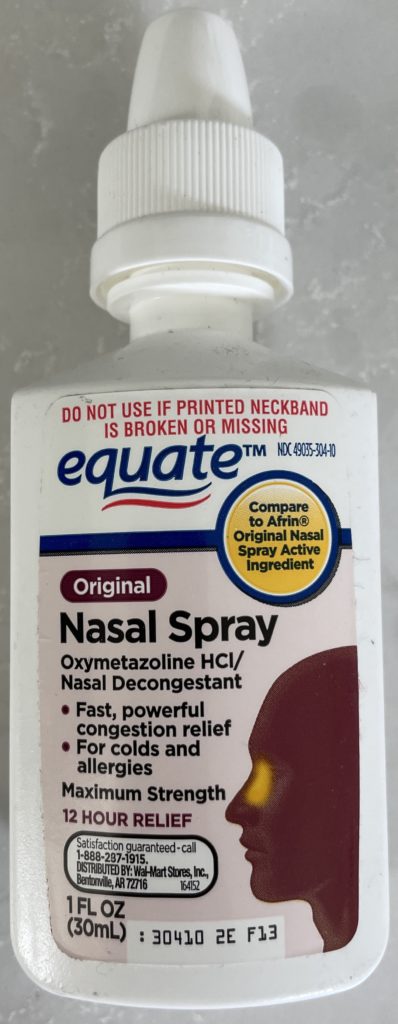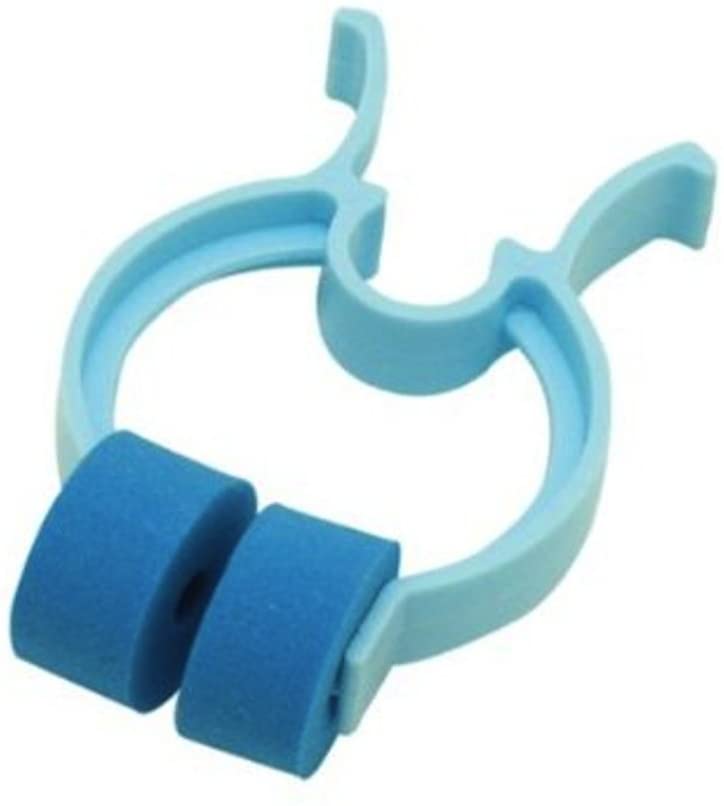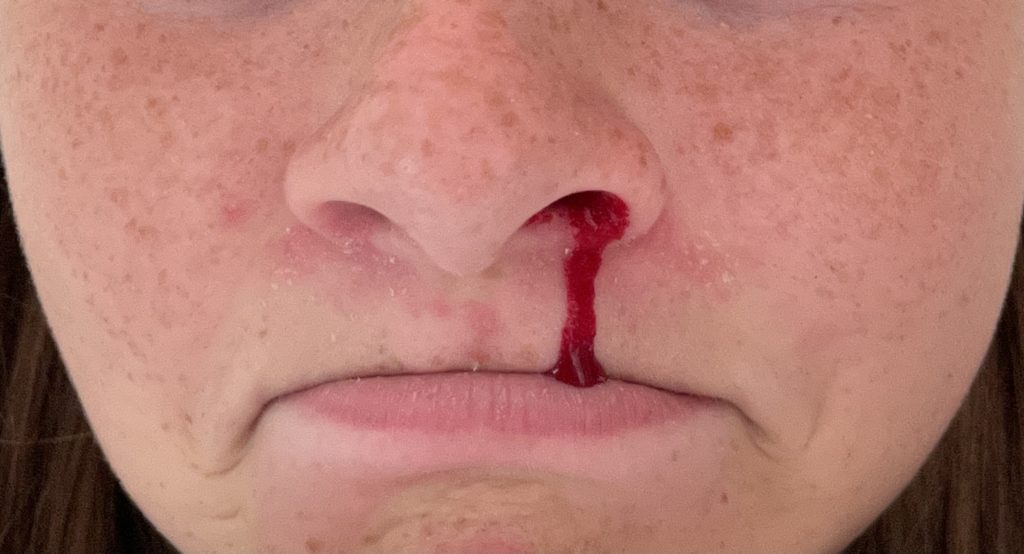Before reading any further, be sure you’ve read Part 1!
When someone comes to the Emergency Department with a bloody nose (epistaxis is the medical term), the first step is always to apply pressure. Since at least 10-15 minutes of pressure are required (at the minimum), we have fancy nose pluggers (picture) to facilitate things. They look amazing and do the job! (Pic above reference)
You’d be surprised how many times just some basic education on how to stop a nosebleed is all that is required with no other intervention.
But if step one—applying pressure the right way and for the right amount of time—doesn’t work, it’s time for step 2.
First, we have the person blow their nose and get rid of any large clots that may be hanging out up the nose. Yes, it’s a messy process, but the nasal passage needs to be as clean as possible for the next step.
Next is 2-4 sprays of oxymetazoline (generic for Afrin) sprayed up the nose (typically only the side that was bleeding, but sometimes both sides), then the nose is pinched again with the clamps for another 10-15 minutes or so.

Oxymetazoline is a topical vasoconstrictive agent. Topical means it is applied/sprayed directly onto the nasal mucosa (the tissue inside the nose), and it causes the blood vessels (vaso) to constrict (get smaller). Imagine all those blood vessels in the nose shrinking in size. The amount of blood flow to the problem area is decreased and the little blood clots that form can stay in place to do their job—to keep the artery from bleeding again!
Oxymetazoline has about a 65% success rate of treating nosebleeds when used every 8-12 hours for 2-3 days. [1] We often don’t need to do anything else!
A word of WARNING however about oxymetazoline—it must be used with caution in those who have high blood pressure, AND it can only be used for a maximum of 3 days before the nose can become “addicted” to it. By “addicted,” I mean the nasal mucosa can begin to have rebound congestion when it wears off if used beyond 3 days. This can eventually go away, but it take several days of no use to resolve during which the nose is uncomfortably congested. As long as it is used less than 3 days in a row and has several days of no use before using again, this problem is normally avoided.
I once worked with a nurse who had gotten “addicted” to oxymetazoline. His nose was miserably congested unless he kept the oxymetazoline sprays coming, so be aware.
During healing and beyond to help avoid problems in the future, it is recommended to keep nasal passages moist with nasal saline and by gently applying petroleum jelly (vaseline) to the affected area.
While this approach is often effective, sometimes it doesn’t work and we have to resort to more aggressive measures which we’ll cover soon in part 3…
1. Krempl, G.A. and A.D. Noorily, Use of oxymetazoline in the management of epistaxis. Ann Otol Rhinol Laryngol, 1995. 104(9 Pt 1): p. 704-6.


